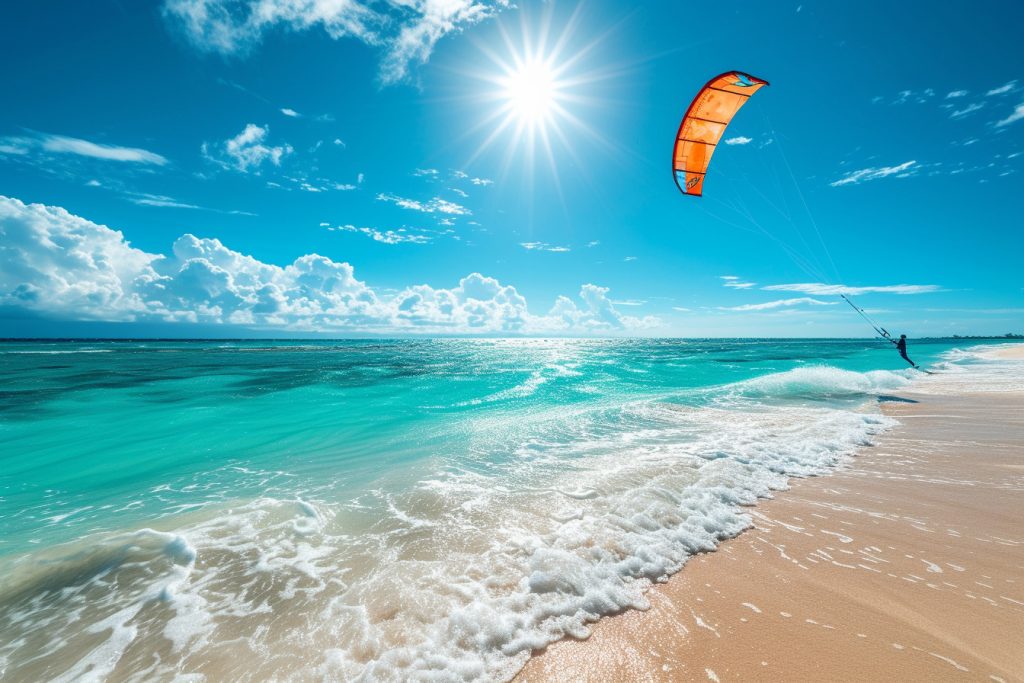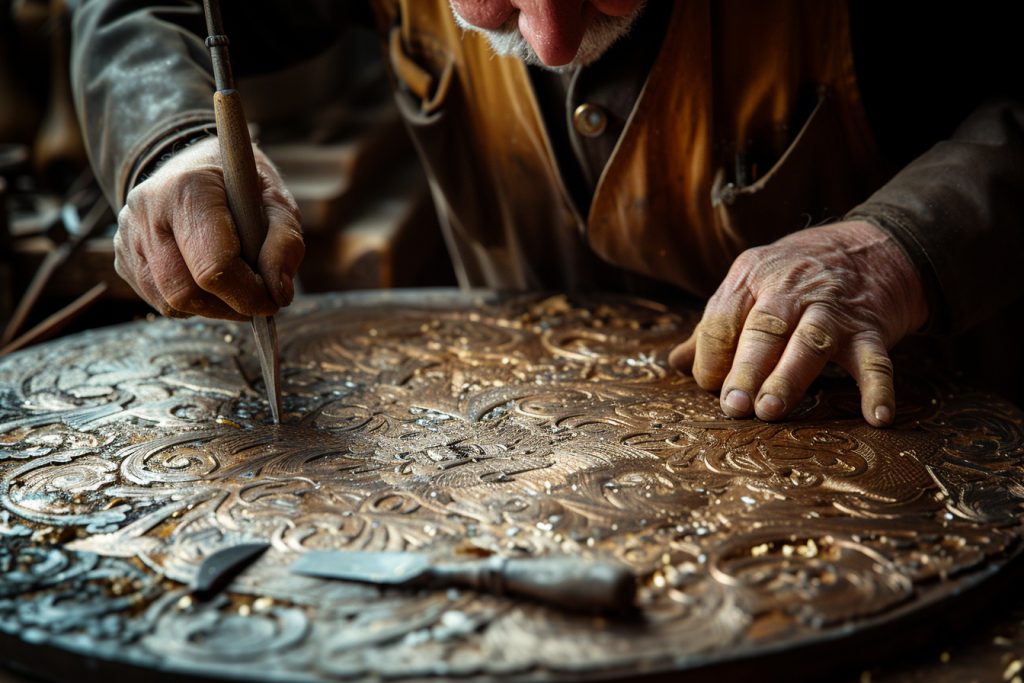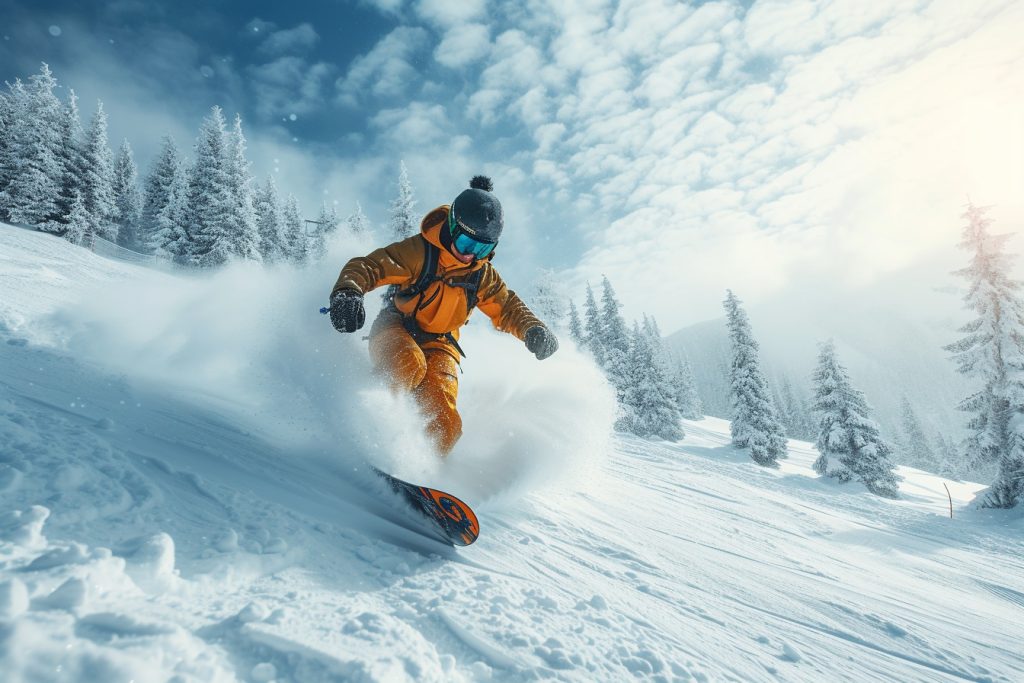Kite surfing, a thrilling blend of windsurfing, surfing, paragliding, and gymnastics, has emerged as a popular water sport for thrill-seekers and ocean lovers. If you’re new to the sport, starting can be as exhilarating as it is daunting. But with the right tips and information, anyone can learn to harness the power of the wind and waves.
Understanding kite surfing
Before diving into the sport, it’s crucial to have a grasp on what kite surfing entails. This exhilarating activity involves using a large controllable kite to pull you across the water on a small surfboard or a kiteboard. It’s a sport that rewards patience, practice, and respect for the elements.
The essential gear
Kite: Your primary equipment in kite surfing is the kite. There are different types of kites to choose from, such as leading-edge inflatables (LEIs), foil kites, and C-kites, each with their own unique features and suitable conditions.
Kiteboard: This is what you’ll stand on. Choices vary from twin tips, which are great for beginners, to wave boards and directional boards for more experienced riders.
Harness: The harness attaches you to the kite and takes the strain off your arms, diverting it to your body instead. Waist and seat harnesses are the two main types.
Control bar: The bar allows you to steer the kite. Pulling on the right or left side causes the kite to turn, while pulling both ends towards you powers up the kite, and pushing it away depowers it.
Safety gear: This includes a helmet, impact vest, and sometimes a wet suit, depending on the water temperature.
Choosing the right conditions
Wind: Kite surfing is all about the wind. Start with gentle to moderate breezes ranging from 12 to 25 knots. As a beginner, avoid extreme weather – too light and you won’t move, too strong and it may become unmanageable.
Location: Look for wide, open beaches with plenty of space and few obstacles both on the shore and in the water. Steer clear of crowded beaches, not only for your own safety but also to respect the space and safety of others.
Starting with lessons
Jumping into kite surfing without any training can be a recipe for disaster. Taking lessons from a certified instructor is invaluable. These professionals provide step-by-step guidance, from setting up your kite to launching it, and bring you from riding basics to your first actual water start.
The importance of a good instructor
A good instructor ensures you learn the proper techniques and helps mitigate risks. They’ll also teach you about wind theory, kite handling, and emergency procedures.
Mastering the kite before hitting the water
The kite is your engine in kite surfing, and having full control over it is non-negotiable. Spend ample time getting comfortable controlling the kite on land. Practice the wind window concept, where you understand where the kite can fly and where it generates power.
Building muscle memory and technique
Repeated practice helps build muscle memory, which is paramount once you’re in the water. Start with simple maneuvers like launching, landing, and controlling the kite in various wind conditions.
Safety procedures and etiquette
Spot Assessment: Before you set up, assess your spot. Check the wind conditions, the beach, and the water for any potential hazards. Also, take note of other surfers and water users to ensure you don’t encroach on their space.
Right of Way: Learn the rules of the sea. Knowing who has the right of way – be it the surfer closest to the wave or the one entering the water – helps avoid accidents.
Emergency Skills: Be aware of emergency procedures such as how to eject from your kite if control is lost. Also, know self-rescue techniques in case you need to get back to shore without the help of your kite.
Physical preparation
Strong swimming skills are indispensable in kite surfing. Building overall strength and flexibility will also aid in handling the kite and board, improving your endurance, and reducing the risk of injury.
Fitness and endurance
Engaging in fitness routines specifically designed for kite surfers can make a huge difference in your performance. Core strength, leg strength, and cardiovascular fitness are essential areas to focus on.
Flexibility and agility
A flexible and agile body will have an easier time performing the dynamic movements required in kite surfing. Incorporate stretching and dynamic exercises into your routine to enhance your range of motion.
Committing to practice
As with any sport, consistent practice is key to progression. Dedicate time to practice both on and off the water to refine your skill set and build confidence.
Moving from land to water
Gradually transition from land-based drills to shallow water practices. Here, you can practice boardstarts and simple rides without the added challenge of deep water.
Progressive learning
Don’t rush the learning process. Start with short sessions and simple goals, progressively tackling more complex techniques and maneuvers as you gain proficiency.
Joining the community
Kite surfing isn’t just about individual skills, it’s also about the culture. Engage with the kite surfing community, both locally and online. Seasoned kite surfers can be a wealth of knowledge, offering tips, advice, and encouragement.
Learning from others
Watch and learn from other kite surfers. Observing their techniques and asking questions can expedite your learning curve.
Sharing experiences and tips
Sharing your own experiences, successes, and struggles with the community can help you reflect on your practice and improve. Plus, you’ll often find that others are more than willing to offer their insights.
Kite surfing offers a unique blend of excitement, freedom, and connection with nature. For those beginning their journey, it promises a rewarding challenge. By arming yourself with the rightknowledge, safety practices, and a commitment to learning, you’ll be riding the waves with confidence in no time.








